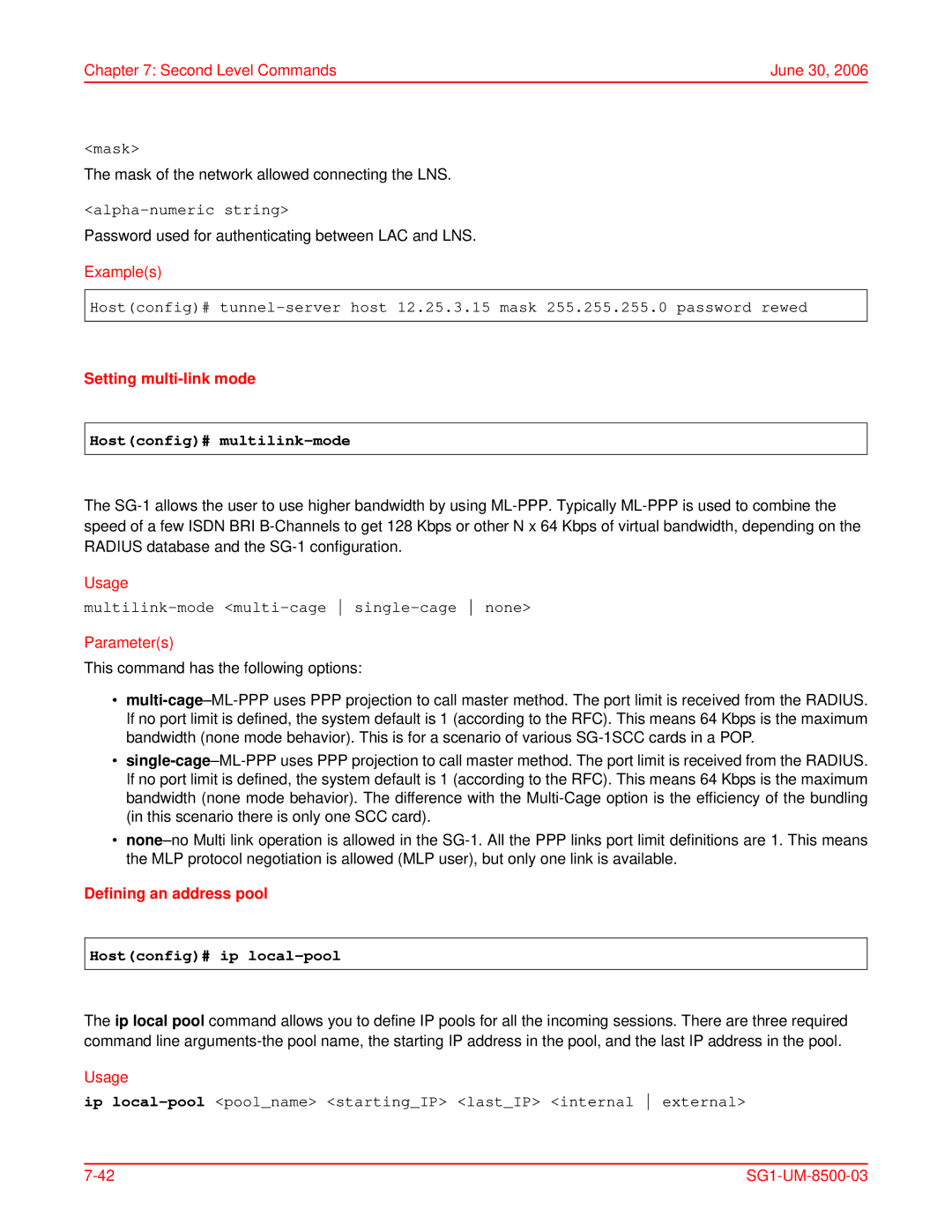
Chapter 7: Second Level Commands | June 30, 2006 |
<mask>
The mask of the network allowed connecting the LNS.
Password used for authenticating between LAC and LNS.
Example(s)
Host(config)#
Setting multi-link mode
Host(config)# multilink-mode
The
Usage
multilink-mode <multi-cage single-cage none>
Parameter(s)
This command has the following options:
•
•
•
Defining an address pool
Host(config)# ip local-pool
The ip local pool command allows you to define IP pools for all the incoming sessions. There are three required command line
Usage
ip
|
